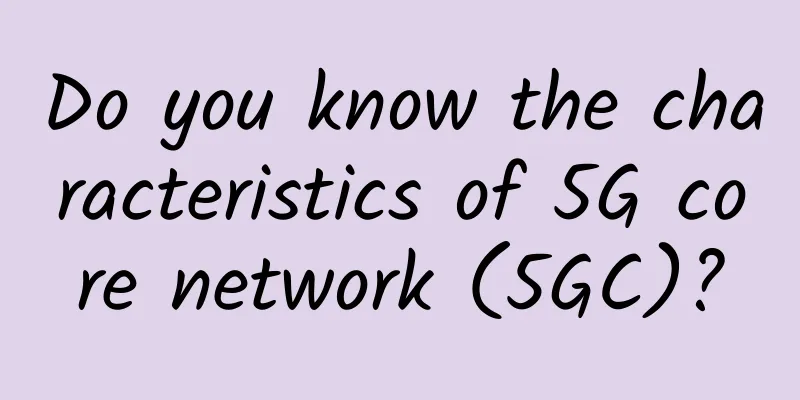As the competition for 6G gathers momentum, can China continue to lead the world?

|
Globally, 5G network construction is in full swing. Although its commercial value is still in the exploration and expansion stage, the industry has already started research on the next-generation 6G technology. In particular, as many industry organizations, research institutions, communications manufacturers, and operators have released white papers on 6G to the public, 6G has gradually become one of the hot topics that have attracted public attention. Why do we need 6G?6G is the next generation of mobile communication technology. It will continue to break the limitations of communication technology on the basis of 5G and promote the continuous progress of human society. The development of digital technology will make it possible to create a virtual digital world. The future of mankind will be a new world where the real physical world and the virtual digital world are deeply integrated and everything is connected intelligently. For example, in the future terminal devices, touch screen input will become a thing of the past. Through the new human-machine interface, people will even rely on brain sensors to operate machines and equipment; for example, holographic communication and sensory interconnection will be popular in future work and social activities, and people will be able to achieve multi-dimensional sensory integration and response without being restricted by time and space. For example, in the future city, countless smart sensors, smart robots, and unmanned vehicles will improve work efficiency and accuracy through mutual collaboration and learning, and calmly respond to various real-time changes. To meet the needs of these future scenarios, mobile communication networks need to provide faster speeds, greater throughput, lower latency, more reliable stability, smarter scheduling, lower energy consumption, etc. than 5G, so as to achieve the connection and integration of the physical world and the digital world. This is the problem that 6G needs to solve. If 6G wants to surpass 5G in speed and bandwidth, it must first solve the spectrum problem. Wireless spectrum is the foundation of mobile communication development and is also a scarce resource. From 1G to 5G, the wireless spectrum used for mobile communication is all below 6GHz, mainly based on the economic characteristics of low-frequency spectrum that can achieve wide coverage, but at the same time it is also limited by insufficient bandwidth and sacrifices the pursuit of higher speed; therefore, in order to achieve breakthroughs in speed and bandwidth, 5G has expanded mobile communication technology to the millimeter wave frequency band of 24GHz to 50GHz for the first time, starting the pioneering journey of mobile communication technology in the high frequency band; in the future, if 6G wants to achieve higher speeds and larger bandwidths than 5G, it can only advance to higher frequency bands than millimeter waves for reclamation. Therefore, the industry generally regards the terahertz frequency band of 100GHz to 10000GHz (or 0.1-10THz) as the most likely operating frequency band for 6G. Compared with millimeter waves, the terahertz frequency band has a higher frequency and a larger communication capacity. It has the characteristics of high transmission rate, strong anti-interference ability, and easy integration of communication and detection. It is also the only new frequency band in the electromagnetic spectrum that has yet to be developed, and the spectrum resources are extremely rich. With the large bandwidth characteristics of the terahertz frequency band, it is sufficient to support the ultra-high transmission rate and ultra-large transmission capacity required by 6G. Therefore, the Federal Communications Commission (FCC) of the United States opened the 95GHz-3000GHz frequency band as an experimental spectrum for 6G technology research and development in 2020. Of course, the utilization of the terahertz frequency band still needs to be fully explored. Based on current technical capabilities, the effective coverage radius of high-frequency terahertz base station networking is only about 10 meters to 50 meters. The number of base stations required to meet the full coverage needs of the public network is difficult to count. Therefore, 6G research needs to make breakthroughs in new wireless air interface technologies to solve the economic cost and physical networking problems of terahertz base station coverage. Global competition for 6G research beginsAs a cutting-edge technology, 6G was first studied by the academic community. The University of Oulu, located in Finland, a communications powerhouse, took the lead in launching the 6G flagship project "6Genesis - Wireless Smart Society and Ecosystem Supporting 6G" in 2018 with funding from the Finnish government. In March 2019, it organized and invited 70 communications experts from various countries to hold the world's first 6G summit and released the world's first 6G white paper, which promoted the start of 6G research. Later, as the 6G vision became clearer, in order to occupy the commanding heights in 6G research, governments around the world began to make strategic plans for 6G research and development, and the United States became one of the first countries to take the lead. Since the deployment of 5G in the United States is restricted by frequency allocation, there is more interference in the low frequency band below 6GHz, which is commonly used internationally. Therefore, the United States has to first launch millimeter wave commercial use, which has also led to the slow development of its 5G. Therefore, some American officials and experts advocate that the United States can consider skipping 5G and directly developing 6G. As early as September 2018, officials of the Federal Communications Commission (FCC) of the United States first publicly looked forward to 6G technology, proposing that 6G will use the terahertz frequency band, and the capacity of 6G base stations will be 1,000 times that of 5G base stations. In May 2020, the Alliance for Telecommunications Industry Solutions (ATIS) of the United States issued a 6G action initiative, suggesting that the government invest additional R&D funds in breakthroughs in 6G core technologies and encourage the government and enterprises to actively participate in the formulation of national spectrum policies. In August 2020, the Trump administration officially approved the experiment of 6G in the United States. Subsequently, the Federal Communications Commission (FCC) of the United States opened the 95GHz-300GHz terahertz frequency band as an experimental spectrum, officially launching the research and development of 6G technology. As the first country in the world to commercialize 5G, South Korea is also one of the first countries to carry out 6G research and development. The Korea Institute of Communications and Information Science held a 6G forum in April 2019 and officially announced the start of 6G research; the Ministry of Science and ICT (MSIT) of South Korea released the "Future Mobile Communications R&D Strategy Leading the 6G Era" in August 2020, planning to invest 200 billion won (about 168 million US dollars) in 6G technology research and development over five years to ensure that South Korea will become the world's first country to commercialize 6G in 2028. In order to compete with South Korea, Japan released the world's first "6G Technology Comprehensive Strategic Plan Outline and Roadmap" in April and June 2020, which takes 6G as a national development goal and initiative, proposing to achieve breakthroughs in key 6G technologies by 2025, officially launch 6G networks in 2030, and have more than 10% of 6G technology patents in Japan. As a result, Japan has become the first country in the world to introduce a 6G national strategy. The EU has adopted a multi-country overall strategic cooperation model to promote 6G research and development. Since the beginning of 2020, it has successively issued a number of related strategies including "Shaping Europe's Digital Future", "Europe's New Industrial Strategy", and "2030 Digitalization Guide" to promote the development of 6G technology. In January 2021, the EU launched the 6G flagship project Hexa-X, which brought together 25 companies and scientific research institutions including communication equipment manufacturers Nokia and Ericsson, communication operators Orange and Telefonica, and the University of Oulu in Finland. It plans to invest 80 billion euros in total to build the EU 6G technology development roadmap and fully help the EU improve its global 6G research and development competitiveness. This is an important step for the EU to bring together key industry stakeholders to jointly promote 6G. my country's 6G research was also launched relatively early. In June 2019, the China IMT-2030 (6G) Promotion Group was established under the leadership of the Ministry of Industry and Information Technology, marking the official launch of my country's 6G research and development. The members of the promotion group mainly include the three major operators, communication equipment manufacturers, universities and research institutions, etc., which have become the main platform for aggregating China's industry-university-research-application forces, promoting China's 6G technology research and development, and conducting international exchanges and cooperation. In November 2019, the Ministry of Science and Technology took the lead in establishing the National 6G Technology Research and Development Promotion Working Group and the Overall Expert Group. Among them, the promotion working group is composed of relevant government departments, and its responsibility is to promote the implementation of 6G technology research and development; the overall expert group is composed of 37 experts from universities, research institutes and enterprises, and is mainly responsible for proposing 6G technology research layout suggestions and technical demonstrations, and providing consultation and suggestions for major decisions. my country's 6G research faces external challengesThe global competition in 6G research has already begun vigorously at the national level. For China, which has achieved globally remarkable results in 5G commercialization, there are many challenges to be addressed if it wants to continue to maintain its leading position in the future 6G competition, but the most important one at present is the pursuit and blockade of the United States. The unfavorable development of 5G has become the biggest driving force for the United States to accelerate 6G research. After the Trump administration officially approved the US 6G experiment in August 2020, in order to accelerate the progress of 6G research, the American Telecommunications Industry Solutions Alliance (ATIS) initiated the establishment of a trade organization dedicated to managing the development of 6G in North America in October of that year - the Next G Alliance. The strategic tasks determined by the alliance mainly include establishing a 6G strategic roadmap, promoting 6G-related policies and budgets, and the global promotion of 6G technologies and services. Its ultimate goal is to establish the United States' leadership in the 6G era. In order to expand the influence of the Next G Alliance, its members include not only American information industry giants such as Qualcomm, Apple, Cisco, Microsoft, Google and telecom operators AT&T, Verizon, but also European telecom manufacturers Ericsson and Nokia, as well as South Korea's Samsung and LG, Japan's Sharp, NEC, Docomo, etc., and Taiwan's chip giant TSMC is also among them. However, the Next G Alliance explicitly requires that organizations subject to export, re-export and/or transfer license requirements on the U.S. Department of Commerce's Entity List are not eligible to participate in the alliance, thereby excluding Chinese companies such as Huawei and ZTE, forming a small circle for 6G cooperation between it and its allies. This is also a continuation of the U.S. communications market excluding Chinese companies from 5G commercial opportunities and continuing to suppress Chinese companies in 6G research. At the end of 2021, the Next G Alliance announced the signing of a memorandum of understanding with the Korea 5G Forum, announcing that the two organizations will conduct in-depth cooperation in discussing the development of a 6G roadmap, global standardization, and spectrum, with the aim of seeking more international support for the 6G roadmap it is leading. In October 2021, the Next G Alliance submitted a 6G roadmap proposal on the IMT-2030 vision to ITU-R, the radio communications department of the International Telecommunication Union, hoping to influence the formulation of future 6G global standards. At present, terahertz has become an important experimental frequency band for the early development of 6G. The National Foundation, NASA and other institutions have made large-scale investments in terahertz technology research since the 1990s; the "Terahertz and Perception Fusion Technology Research Center" jointly established by more than 30 American universities also launched research on wireless technology and terahertz chips in September 2020; therefore, the United States has formed a certain leading advantage in the field of high-frequency wireless in terms of technical foundation, RF hardware and chips. In March 2019, the Federal Communications Commission (FCC) of the United States first announced the opening of 95GHz-3000GHz terahertz for 6G experiments in the world, and the Next G Alliance submitted a 6G roadmap proposal to ITU-R. Its purpose is to transform the United States' advantage in terahertz technology into its influence and dominance over the global standards of 6G technology. However, due to the impact of the Entity List sanctions of the U.S. Department of Commerce, my country's high-tech companies including Huawei and ZTE have not only been excluded from the Next G Alliance and have no opportunity for technical exchanges, but have also been subject to strict restrictions by the U.S. government on the import of related technologies and chips, seriously affecting my country's research and development progress in the field of high-frequency wireless technology. Once the United States takes advantage of its technological leadership and ally effect to dominate the formulation of 6G global standards, my country's voice in communication technology standards that it has regained in the 4/5G era may be lost again, and it may fall into a passive situation of being beaten. my country's 6G research needs to overcome internal obstaclesAt present, my country has built 1.4 million 5G base stations and the number of 5G mobile terminal connections has exceeded 500 million, ranking far ahead in the global market and achieving remarkable results. However, this has also caused the country to rely on 5G experience in 6G research, hindering the innovation and breakthroughs of 6G technology. my country's IMT-2030 (6G) Promotion Group released the latest "6G Overall Vision and Potential Key Technology White Paper" in June 2021. However, this strategic document, which is issued by an authoritative organization and has guiding significance for my country's 6G research, still regards the new spectrum in the 6GHz and below frequency bands as a strategic resource for the development of 6G. It believes that "through re-cultivation, aggregation, sharing and other means, the efficiency of spectrum utilization will be further improved, which will provide 6G with the most basic ground continuous coverage and support 6G to achieve fast and low-cost network deployment"; for higher frequency bands such as terahertz and visible light, which have become the industry's consensus on 6G and the United States has put into trials, it emphasizes their limitations that "due to propagation characteristics, they will focus on meeting short-distance and large-capacity needs in specific scenarios", and lightly believes that "these high-frequency bands will also play an important role in scenarios such as perception and communication integration and human body domain connection." From the perspective of future network construction, the IMT-2030 (6G) Promotion Group's view of attaching importance to medium and low frequency bands is certainly reasonable, but from the perspective of leading the development of 6G technology, it is inevitable that it is suspected of avoiding the United States. To meet 6G's demand for ultra-high speed and ultra-large capacity spectrum, high-frequency band technology is inevitable. The current key topic of the industry's research on 6G technology is also how to break through the coverage economy of high-frequency band equipment; and the white paper of the IMT-2030 (6G) Promotion Group sets the goal of building a large-scale 6G network at the fastest speed, hoping to continue to win by network scale in the future 6G competition. This is obviously a path dependence on my country's successful experience in 5G. my country's 5G construction first planned to build networks in the mid-frequency bands of 3.5GHz and 2.6GHz to meet the needs of high-speed and large-bandwidth scenarios. However, in the face of the scarcity of 5G applications and the high operating costs of 5G equipment, it turned to planning to build networks in the low-frequency bands of 2.1GHz and 700Mhz to achieve wider coverage of low-cost 5G. As a result, China was able to complete the construction of 1.4 million 5G base stations in just three years, achieving global leadership in 5G network construction scale and market leadership in the global 5G industry. However, as the 5G standard develops towards R16, R17, and R18, 5G's demand for high speed and large bandwidth will ultimately be supported and realized by medium and high frequency bands, and its technological value will be maximized in vertical industry applications. Therefore, as 5G evolves to 6G, competition will increasingly focus on technological advantages and industrial value, rather than the size of the network. Therefore, if the United States has already formed a competitive advantage in terahertz technology, we have to bypass the high-frequency bands and emphasize the rapid construction of 6G networks in the medium and low frequency bands. This is undoubtedly looking at 6G with the primary thinking of 5G, treating 6G as an ordinary connection technology iteration, but ignoring the strategic significance of 6G technology in connecting the physical world and the digital world. Such a technical viewpoint cannot play a leading role in global 6G research, and it is difficult to win broad support in the competition for 6G global standards. In addition to the technical views of the IMT-2030 (6G) Promotion Group, my country's leading communications companies also have a negative attitude towards promoting 6G research. Since my country has achieved leadership in 5G standards, domestic companies have accumulated a lot of benefits in 5G patents and the 5G market. Pushing the technical standards to evolve to 6G too early and too quickly will undoubtedly cause a certain degree of damage to the existing interests of 5G. Therefore, they are generally negative about investing in the new generation of technology and fall into the path dependence of "evolutionary shortsightedness". Therefore, in the increasingly competitive 6G research track, facing the aggressive and enterprising mentality of the United States, Japan, South Korea and the European Union and the severe challenges of the United States' pursuit and blockade, if my country's industry still remains on the path of reliance on 5G experience, the risk of missing the 6G opportunity and being overtaken by others will undoubtedly become greater and greater. Recommendations on my country’s 6G competition strategyFaced with the challenge of the United States' advantages in high-frequency technologies such as terahertz, and its suppression strategy of technological blockade against Chinese companies, in order to gain a leading position in the global competition of 6G research, Chinese government departments, research institutions and related companies need to raise their awareness of crisis, abandon the mentality of lying on the success of 5G commercialization and falling into path dependence, take action as soon as possible, and make changes in the following three aspects: Further expand opening up in the mobile communications market and technology research and development, especially strengthen cooperation with EU companies. In the global 5G industry chain, American companies Qualcomm and Apple have formed a strong competitive advantage in the chip and terminal markets, but the communication equipment field is mainly occupied by China's Huawei and ZTE and Europe's Ericsson and Nokia, and there are no competitive American companies involved. Therefore, in addition to maintaining its advantages in the chip and terminal fields in the 6G competition, the United States' greater goal is to regain a place in wireless radio frequency products. Therefore, in addition to my country's Huawei and ZTE, its targets will inevitably affect Europe's Ericsson and Nokia. In order to enhance and strengthen the competitiveness of EU mobile communication technology in 6G, based on the strategic plan of Europe 2020 Vision Plan, Nokia, as the lead unit, launched the EU's first 6G guidance project Hexa-X in the field of communications, committed to building the EU's 6G technology development roadmap; Ericsson organized and participated in the EU REINDEER project, mainly studying non-cellular MIMO technology, and committed to making the EU a center for the development, standardization and final deployment of 6G. In a sense, this is also the EU's hope to form a countervailing force in the high-tech confrontation and 6G competition between China and the United States. In order to develop unified technical standards and build a global market for 6G, it requires cooperation among multiple parties and the formation of a majority consensus. For my country's 6G research, there is a risk of being marginalized if we only rely on gathering domestic forces to conduct research and development behind closed doors. Therefore, we need to unite more global forces. We can consider forming a multinational research and development alliance similar to the US Next G, or we can refer to the EU's Hexa-X to establish a multinational research and development project to attract companies and research institutions from various countries, including EU companies, to participate. Through close ties in technology and the market, we can not only break the US technological blockade in 6G research, but also jointly check and balance the US in the process of international organizations such as ITU and 3GPP formulating 6G standards. Domestic communications companies such as Huawei, ZTE, and Xiaomi should have the courage to shoulder the 6G mission. In April 2021, the Intellectual Property Development Research Center of my country released the "6G Communication Technology Patent Development Status Report". The report shows that although China's 6G patent applications began to increase rapidly after 2009, significantly exceeding the United States, Europe, Japan, South Korea and other countries and regions, and the contribution rate in global patent applications is the largest, but among the top ten applicants in the world, there are three companies in Japan, the United States and South Korea, namely Japan's NEC Corporation, South Korea's Daewoo Communications Corporation, Japan's Mitsubishi Electronics Corporation, Korea Telecom Research Institute, South Korea's Samsung Electronics, the United States Hughes Network Systems, Japan's NTT Corporation, the United States Qualcomm and the United States Viacom, while my country only has the University of Electronic Science and Technology of China ranked eighth in the world in patent applications. Judging from Chinese patent applications alone, the top ten are also domestic universities and research institutions. This shows that in the global 6G communication technology innovation competition, foreign companies that fell behind in 5G have begun to catch up and are at the forefront of 6G, while my country's 6G innovation forces are still mainly concentrated in universities and research institutions. Domestic communication equipment manufacturers and mobile phone manufacturers such as Huawei, ZTE, Xiaomi, Vivo, Oppo, etc. that have achieved commercial success in 5G have not yet made any efforts. Benefiting from the dividends of my country's 5G policy, Huawei and ZTE, which have gained huge market opportunities in the process of 5G network construction and commercial use, have a market share of more than 90% in the domestic 5G base station market. Domestic brands such as Xiaomi, Vivo, and Oppo also account for more than 80% of the 5G mobile phone shipments. The vast majority of these companies' current business revenue comes from 5G business, so although each company has announced that it has started technical reserve research for 6G, judging from the 6G patent application situation, they not only lag behind domestic universities and research institutions in my country, but also lag behind Japanese and Korean companies that hope to achieve a turnaround in 6G. Therefore, communications companies including Huawei, ZTE, and Xiaomi must have a forward-looking and sense of crisis, and must be brave enough to shoulder the mission of continuing to lead 6G. They must allocate 6G research and development from current 5G revenues, cooperate with academia in 6G research, and make breakthroughs in high-frequency technology as soon as possible to create a competitive advantage in 6G technology. Adjust national strategic planning and accelerate 6G researchThe global competition in 6G research has already begun at the national level. Countries and regions such as the United States, Japan, South Korea and the European Union have all issued 6G national strategies and roadmaps: the United States has approved the 6G terahertz experimental frequency band, Japan plans to open a 6G experimental network at the 2025 Osaka World Expo, and South Korea has announced that it will be the first commercial 6G in 2028; but in my country's "14th Five-Year Plan for National Economic and Social Development (2021-2025) and the Outline of the Long-Term Objectives for 2035", the plan for "accelerating the construction of new infrastructure" is still at the stage of "accelerating the large-scale deployment of 5G networks...proactively deploying 6G network technology reserves"; as the competent department of the information and communication industry, the "14th Five-Year Plan for the Development of the Information and Communication Industry" formulated by the Ministry of Industry and Information Technology only sets "carrying out research and development of 6G basic theories and key technologies" as the development goal for the next five years. In comparison, my country's top-level design for the 6G roadmap is obviously more conservative than that of the United States, Japan and South Korea. According to such a plan, my country's future launch of 6G experimental and commercial networks may lag far behind those of the United States, Japan and South Korea, and it is very likely to lose the opportunity and status to continue to lead the world in 6G. Therefore, in the face of strategic competition between the United States, Japan and South Korea on 6G, my country should make corresponding adjustments to its national strategic plan for 6G development as soon as possible, clearly put forward the requirement to accelerate 6G research, drive the domestic 6G industry to break away from its path dependence on the success of 5G, promote domestic 6G research to achieve breakthroughs in high-frequency technologies and products such as terahertz, and launch 6G terahertz frequency band experiments in a timely manner to ensure that 6G continues to lead the realization of global goals. ConclusionWhen the article was finished, the State Council issued the "14th Five-Year Plan for the Development of the Digital Economy". In the section "Optimizing and Upgrading Digital Infrastructure", the description of 6G in terms of "accelerating the construction of information network infrastructure" has added the phrase "increasing support for 6G technology research and development, and actively participating in promoting 6G international standardization work" on the basis of "forward-looking layout of sixth-generation mobile communication (6G) network technology reserves". This is a new requirement put forward by the government for "6G technology research and development". By "increasing support" to promote the strategic layout of 6G research in my country's communications industry, and by "actively participating" to promote 6G international standardization, my country can continue to maintain its leading role and position in the evolution of the mobile communications industry to the next generation of technology. |
<<: OTDR YYDS, it is said that communications people can understand it!
Recommend
[11.11] ZJI: Hong Kong special server 30% off, 999 get 1100 yuan voucher
ZJI has released a promotional plan from now unti...
edgeNAT September Promotion: 20% off for monthly VPS and 30% off for annual VPS starting from 48 yuan/month, in the US/Hong Kong/Korea data centers
edgeNAT has launched a promotional event for the ...
WiFi, Bluetooth, NFC, three major technologies covered in one article!
Wi-Fi, Bluetooth, NFC, I believe everyone is fami...
The three major operators announced their operating data for October: the number of 5G package users exceeded 200 million
On November 23, the three major domestic operator...
55 yuan = 199 yuan, do you understand the "routine" behind the telecom package?
Reporters found that while measures to benefit th...
197 Fortune 500 companies choose Huawei to achieve win-win in the new ICT era
At the 2017 Huawei Connect Conference HUAWEI CONN...
iOVZ VPS in March 20% off monthly payment and 30% off annual payment, South Korea/Los Angeles data center available
iOVZ Cloud has launched a regular promotion in Ma...
Digital twins, the Internet of Things, and new technologies that can help remote work
In recent years, the traditional offline working ...
On the eve of 5G’s arrival: the game between operators’ capital expenditure and investment returns?
In recent years, while operators' revenues ha...
Huawei's Li Peng: Stimulate new growth and lead the first year of 5G-A commercialization
[ Barcelona , Spain , February 25, 2024 ] Today...
[Black Friday] HostDare: 15% off Los Angeles CN2 GIA line VPS, starting at $42.4 per year
HostDare also launched this year's Black Frid...
RedCap Will 5G spark an IoT gold rush?
A scaled-down version of 5G could spark a surge i...
Feiyuxing Wireless helps the famous Yueyang No. 16 Middle School realize campus informatization construction
The 16th Middle School of Yueyang City, Hunan Pro...
How does the TCP connection state change?
TCP is a connection-oriented reliable transmissio...
Virtono: 14 new data centers added recently, 40% discount on down payment, starting from €17.9/year
Virtono recently released a 40% discount code for...









